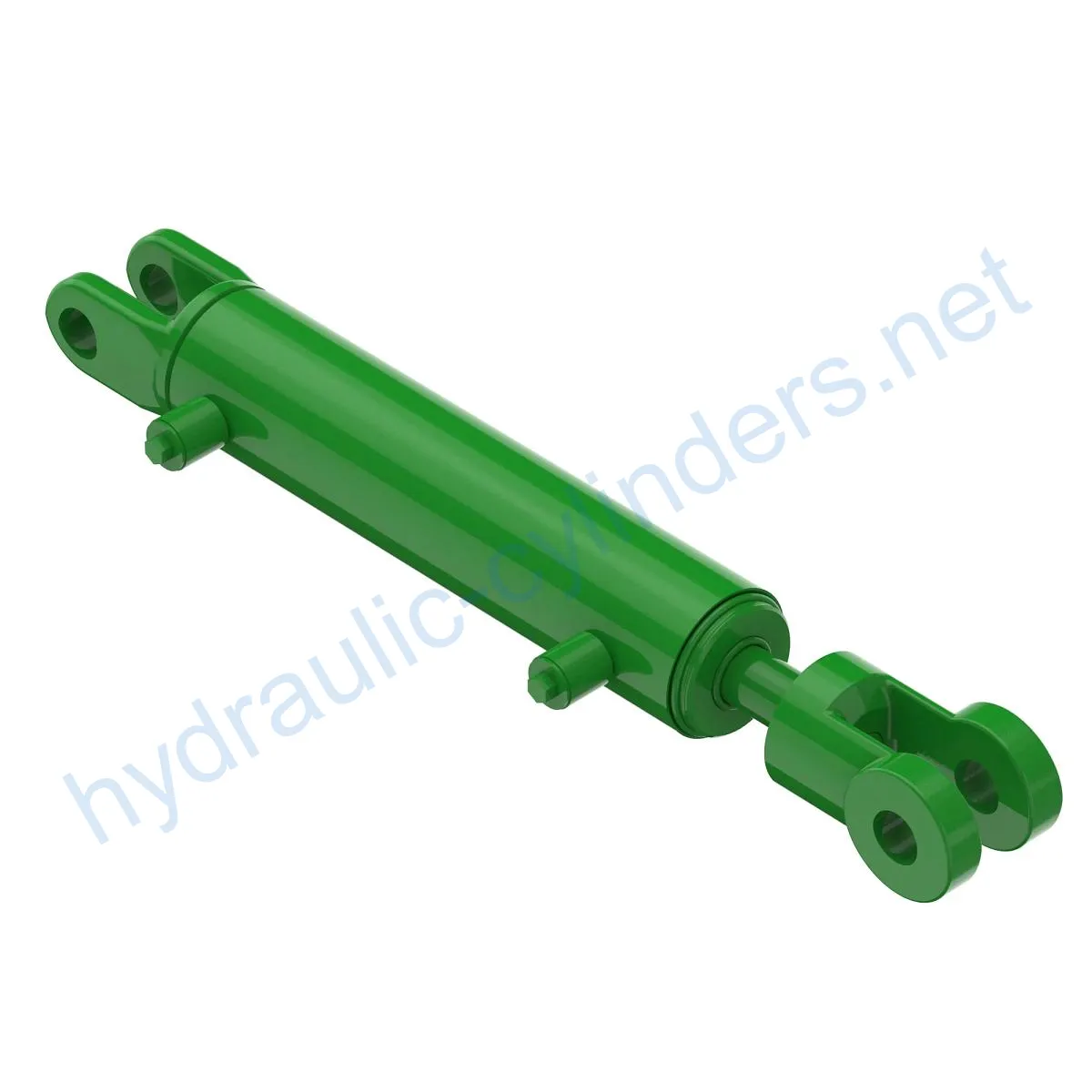Replacement Of AH176605 Wing Lift Hydraulic Cylinder
As one of the hydraulic cylinders manufacturers, suppliers, and exporters of mechanical products, We offer hydraulic cylinders and many other products.
Please get in touch with us for details.
Mail:sales@hydraulic-cylinders.net
Manufacturer supplier exporter of hydraulic cylinders.
Replacement Of AH176605 Wing Lift Hydraulic Cylinder
This product is a replacement hydraulic cylinder for the AH176605 wing lift system. It is designed to provide the necessary lift and support for wing components in various agricultural equipment models, including the 1690, 1720, 1720 CCS, 1725, 1725 CCS, 1770, 1780, 1835, 1890, 1895, 1990, 2810, H550F, N530F, N536, N540F, N542, N542C, and N543F.
Specifications
- Weight: 19.62 lb
- Height: 3.5 in
- Width: 4.5 in
- Length: 22.5 in
Features
1. Improved Equipment Performance:
Replacing damaged or worn hydraulic cylinders can restore the normal operation of equipment, ensuring optimal performance in various applications.
2. Enhanced Safety:
Regularly replacing hydraulic cylinders can reduce safety hazards caused by cylinder failures, ensuring the safety of both operators and equipment.
3. Overload Protection:
New cylinder designs often incorporate better overload protection mechanisms, improving overall safety.
4. Quick Installation:
Modern hydraulic cylinders are designed for easy installation and replacement, minimizing downtime.
5. Standardized Components:
Many hydraulic cylinders are standardized products, making it easier to source replacement parts in the market.
Applications
This hydraulic cylinder can be used in various equipment and machinery, including but not limited to:
- Excavators:
- Cranes:
- Tractors:
- Harvesters:
- Automated Production Lines:
- Die Casting Machines:
- Mining Equipment:
- Bulldozers:
Replacing hydraulic cylinders on excavator booms or buckets can restore their normal operation, ensuring efficient digging and lifting.
The hydraulic cylinders in crane booms are subject to wear and tear during frequent lifting and lowering operations. Regular replacement is necessary to ensure safety.
The front-end loader hydraulic cylinders on tractors may develop leaks or experience performance degradation due to continuous lifting and tilting operations. Replacing them is essential for optimal functionality.
During the harvesting process, hydraulic systems endure high pressures, and fatigue can lead to cylinder damage. Timely replacement is crucial to maintain operational efficiency.
Hydraulic cylinders are used to control robotic arms and other automated equipment. Cylinder failure can significantly impact production efficiency and should be promptly addressed.
In high-pressure and high-temperature environments, hydraulic cylinders in die casting machines may experience performance degradation. Regular replacement ensures product quality.
Hydraulic cylinders are used for lifting and moving heavy loads in mining equipment. Due to the harsh working conditions, regular inspection and replacement are necessary to prevent equipment failures.
Wear of hydraulic cylinders on bulldozer blades can lead to a decrease in pushing power. Timely replacement is essential to maintain operational efficiency.
Maintenance Tasks
Regular maintenance is important to ensure the longevity and performance of the hydraulic cylinder. Some common maintenance tasks include:
- Regular Inspection:
- Proper Lubrication:
- Seal Replacement and Calibration Checks:
Inspect the cylinder for any signs of damage or leaks. Check for proper alignment and ensure all connections are secure.
Apply the appropriate amount of hydraulic oil to ensure smooth operation. Follow the manufacturer’s guidelines for lubrication intervals.
Periodically replace seals to prevent leaks and ensure proper sealing. Check and calibrate the cylinder to maintain optimal performance.
During installation, provide proper guidance on aligning the cylinder correctly. It is recommended to use suitable installation brackets for securing the cylinder. Additionally, offer recommended inspection, repair, and replacement procedures, along with parts replacement and rebuilding services to extend the lifespan of the hydraulic cylinder.
Safety Considerations and Environmental Factors
When using hydraulic cylinders, it is important to prioritize safety measures. Proper handling, maintenance, and disposal of hydraulic components are crucial to prevent accidents and minimize environmental impact.
Troubleshooting and Common Issues
Here are some common troubleshooting tips and solutions for potential issues:
- Issue: Cylinder not extending or retracting.
- Issue: Slow or jerky cylinder movement.
- Issue: Cylinder drifts or fails to hold position.
- Issue: Excessive noise or vibrations from the cylinder.
- Issue: Cylinder leaks.
Solution: Check for hydraulic fluid leaks, inspect the control valves, and ensure proper hydraulic pressure.
Solution: Check for insufficient or contaminated hydraulic fluid, inspect the hydraulic pump, and ensure proper lubrication.
Solution: Check for worn-out seals, inspect the control valves, and adjust the pressure settings.
Solution: Inspect for loose or damaged components, check the alignment, and ensure proper mounting.
Solution: Replace worn-out seals, inspect all connections for leaks, and ensure proper sealing.
Providing troubleshooting tips and problem-solving methods helps readers effectively diagnose and resolve issues. Additionally, suggesting preventive measures can minimize potential problems.

Design Considerations and Selection Criteria
When selecting a hydraulic cylinder, several design considerations and selection criteria should be taken into account:
- Load-Bearing Capacity:
- Sealing:
- Durability:
- Safety:
- Maintainability:
Determine the required load-bearing capacity of the cylinder to ensure optimal performance and safety.
Choose appropriate sealing components, such as piston seals and rod seals, made from durable materials like polyurethane or nitrile rubber.
Ensure the cylinder is constructed with durable materials and features fine surface treatments on the cylinder body and threaded ends to enhance wear resistance.
Consider safety features, such as overload protection mechanisms, to prevent accidents and ensure operator safety.
Opt for cylinders designed for easy maintenance, with accessible components and clear instructions for inspection, repair, and replacement procedures.
Take a Tour of Our VR Factory:
Take a tour of our VR factory with the following
Hydraulic Cylinder Application:


